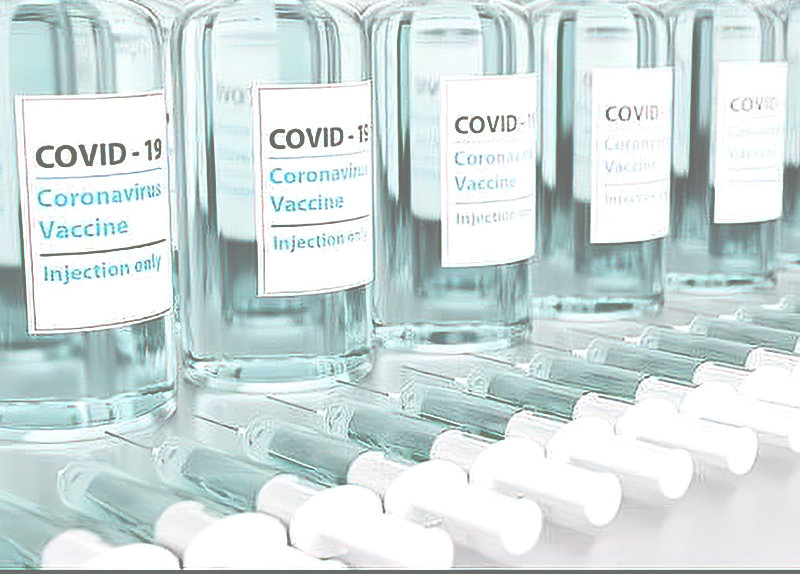Support the Timberjay by making a donation.
Little interest in latest COVID vaccines even as cases rise
REGIONAL- Minnesotans have shown little interest in additional protection from COVID-19, this fall, even as hospitalizations are on the rise again in the state. New bivalent boosters were released …
This item is available in full to subscribers.
Attention subscribers
To continue reading, you will need to either log in to your subscriber account, or purchase a new subscription.
If you are a current print subscriber, you can set up a free website account and connect your subscription to it by clicking here.
If you are a digital subscriber with an active, online-only subscription then you already have an account here. Just reset your password if you've not yet logged in to your account on this new site.
Otherwise, click here to view your options for subscribing.
Please log in to continue |
Little interest in latest COVID vaccines even as cases rise
REGIONAL- Minnesotans have shown little interest in additional protection from COVID-19, this fall, even as hospitalizations are on the rise again in the state. New bivalent boosters were released for use in September, but the public has shown little interest in the vaccines.
Hospitalizations for the week ending Saturday, Nov. 18 were the highest registered since last February at 389, an 80-percent increase over the week ending Nov. 4 according to data reported by the U.S. Centers for Disease Control. CDC health service areas encompassing 15 Minnesota counties are rated at medium to high community risk levels for COVID-19. Increased contact through Thanksgiving holiday gatherings could further boost those numbers as happened in earlier phases of the COVID pandemic.
The other oft-used indicator of COVID activity, the measure of COVID viral load in wastewater, also corresponds with the increase in hospitalizations. In the past two weeks, the viral load in the northeast region of the state has increased by 44.7 percent, mirroring a statewide increase of 44.2 percent.
Meanwhile, response to the boosters formulated to combat more recent mutations of the coronavirus has been lukewarm. Since the new shots became available in mid-September, only 14.2 percent of Minnesotans, one in seven, are reported to be up to date with the booster as of Nov. 21, according to the most recent Minnesota Department of Health update. MDH data for St. Louis County shows slightly greater vaccine uptake at 15.6 percent. Both figures trail the national total of 17 percent booster uptake to date.
Unsurprisingly, the age group most likely to have received the booster are those 65 and over, as this group is more vulnerable and more likely to experience complications that could lead to hospitalization, and a higher percentage live in congregate care settings. About four-in-ten seniors 65 and over have received the updated booster, and uptake steadily declines with each successively younger age group to around five percent for elementary and preschool-age children.
Booster uptake is lagging well behind initial projections that about half of those vaccinated would get the shot, and a recent Kaiser Family Foundation survey found that lack of public concern about getting sick from COVID-19 may be the reason why.
Only 26 percent of the public is concerned that they will get COVID over the holidays, the survey found.
However, about half of adults surveyed said they plan to take some precautions against COVID, including avoiding large gatherings, wearing masks, limiting travel, and taking COVID tests ahead of visiting families and friends.
Health officials have attributed much of the diminished concern about COVID-19 to “COVID fatigue,” a general societal tiredness of all of the restrictions and lifestyle changes imposed by the long pandemic. Relatively low levels of cases, hospitalizations, and deaths throughout the late spring and summer and milder variants of the virus helped to create a perception of a “return to normal” in which COVID was not perceived to be the threat it once was.
Long COVID research
Meanwhile, the U of M Center for Infectious Disease Research and Policy (CIDRAP) highlighted a study earlier this month suggesting that one in seven Americans have or have had long COVID, a set of persistent symptoms that last well beyond an initial COVID infection. Those who reported experiencing long COVID also experienced more anxiety, low moods, and difficulty with memory. Women were more likely than men to report long COVID.
Long COVID has been a somewhat elusive condition to pin down due to the variability and timing of symptoms and a lack of consensus in the medical community about how to identify and classify the condition. But in a separate CIDRAP report a new “Core Outcome Measure Set” was described that was developed through the input of 594 individuals from 58 countries that should put researchers and clinicians on the same page regarding long COVID. Twelve core outcomes of long COVID were identified, including fatigue or exhaustion, pain, post-exertion symptoms, work or occupational and study changes, and cardiovascular, nervous system, cognitive, mental health, and physical outcomes. The group also narrowed down the types of assessment tools that should be used to measure these effects. This work was considered to be an essential step toward developing long COVID treatment options.
Free COVID tests
Every home in Minnesota is eligible to order eight rapid at-home COVID tests per month for free from MDH while supplies last by going online to https://sayyeshometest.org. An additional eight free at-home tests are available through the federal government’s covidtests.gov website. Federal COVID tests orders may also be called in to 1-800-232-0233.






